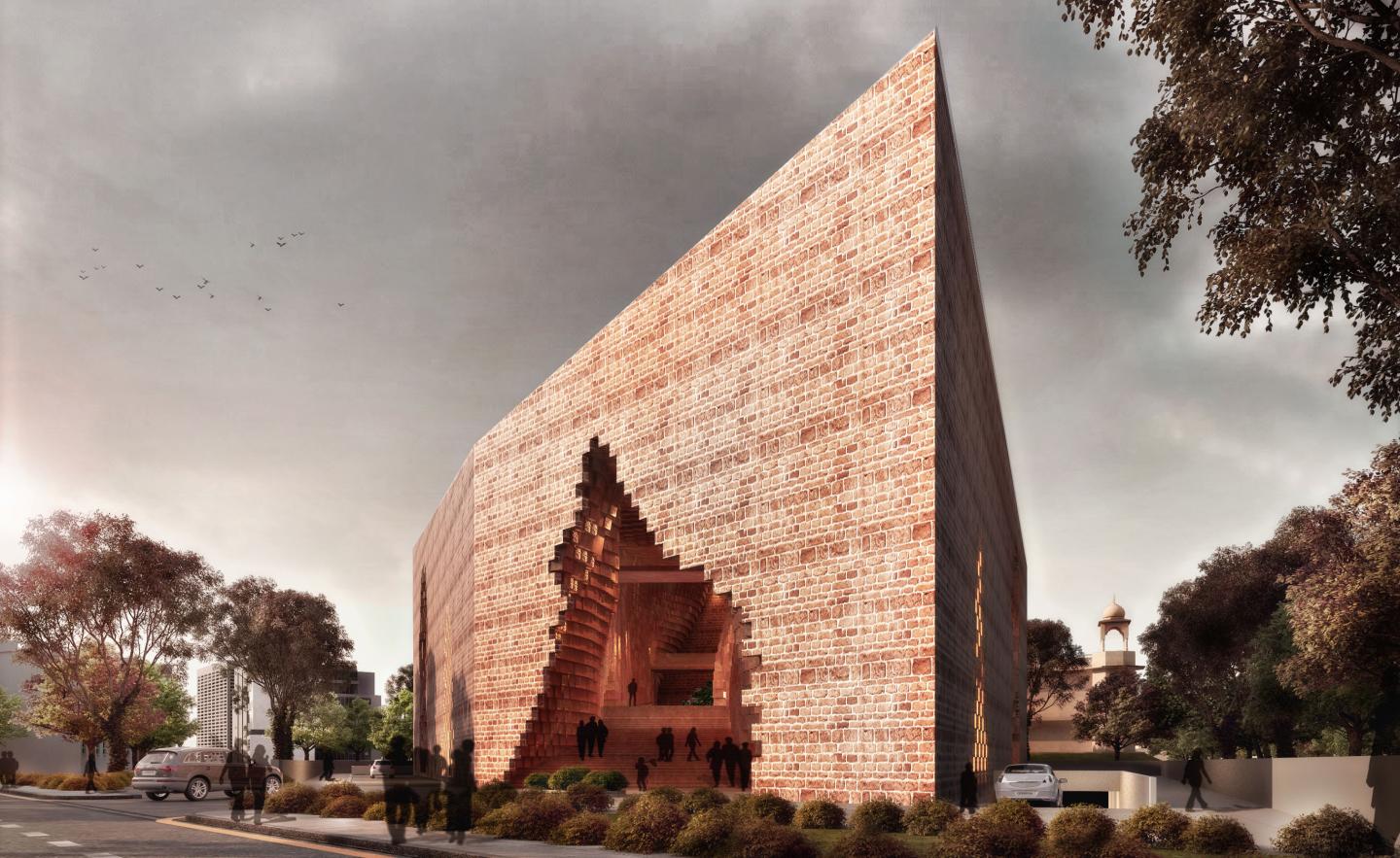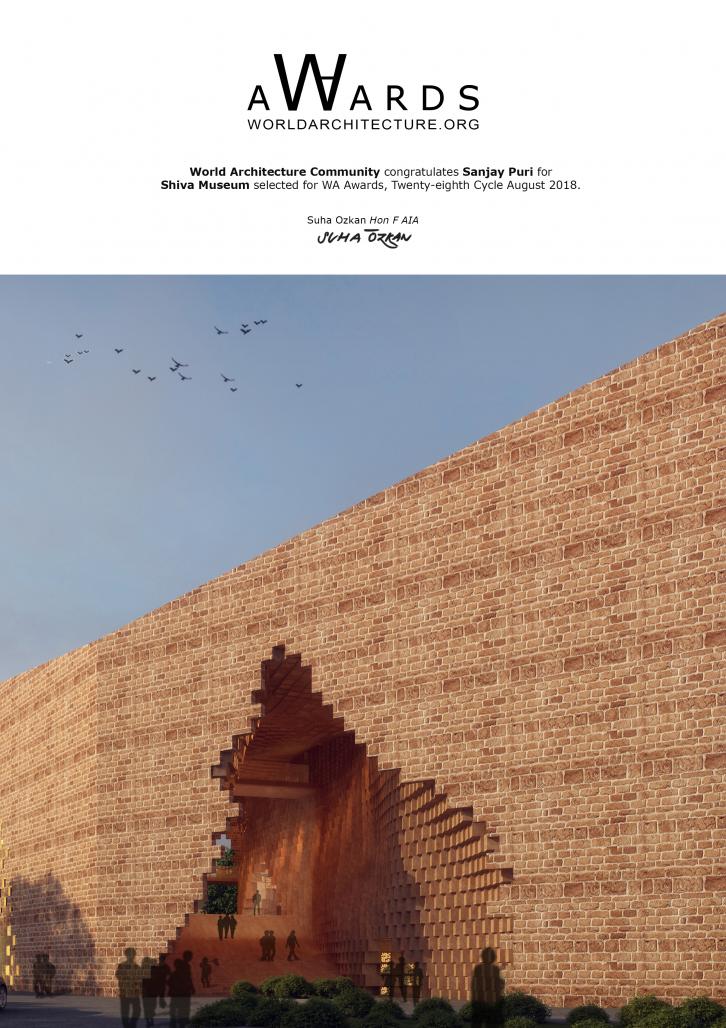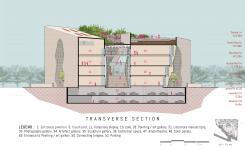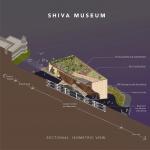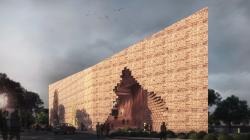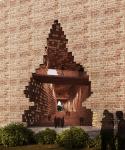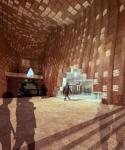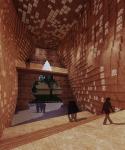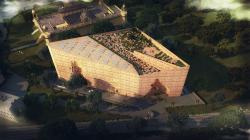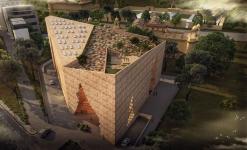Located in Jaipur city in Rajasthan, India. The museum is split into 2 wedge shaped areas allowing visitors to access the exhibition spaces on either side through a large walkway which acts as a community space for hosting activities. This walkway simultaneously frames an existing traditional temple at the rear instead of completely blocking its visibility from the main road if the building was one complete volume.
Proposed to be built in the regional sandstone available within a few kilometers from the site, the building opens up in the center framing views of the temple beyond.
This entire open community space is sky lit and naturally ventilated providing a sheltered space in response to the hot desert climate of its location with temperatures in excess of 35°Celsius for 8 months annually.
Open bridges at upper levels connect the exhibition and museum spaces on either side creating the experience of moving indoors and outdoors sequentially.
Due to the small size of the building every part is made usable for facilitating communal activities.
The terrace on one side is used for harnessing solar energy whilst the other side is designed as an open garden area with a performance stage.
Three levels on either side of the sheltered walkway house museum & exhibition spaces as well as ancillary activities.
The entire walkway is designed with sandstone screens that form cuboids moving in and out organically creating a sculptural envelope for the space.
The design takes cognizance of the requirements, the location of an existing temple, locally available materials and the climate to create a responsive contextual building for the community.
2017
0000
SANJAY PURI , SUZANNA MACHADO & OMKAR RANE
SHIVA MUSEUM by SANJAY PURI ARCHITECTS in India won the WA Award Cycle 28. Please find below the WA Award poster for this project.
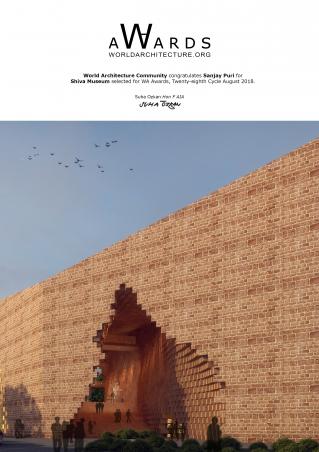
Downloaded 184 times.
Favorited 1 times
